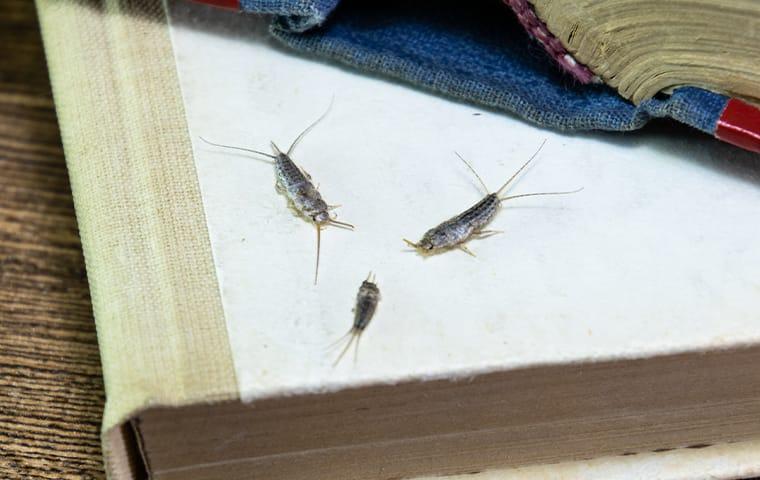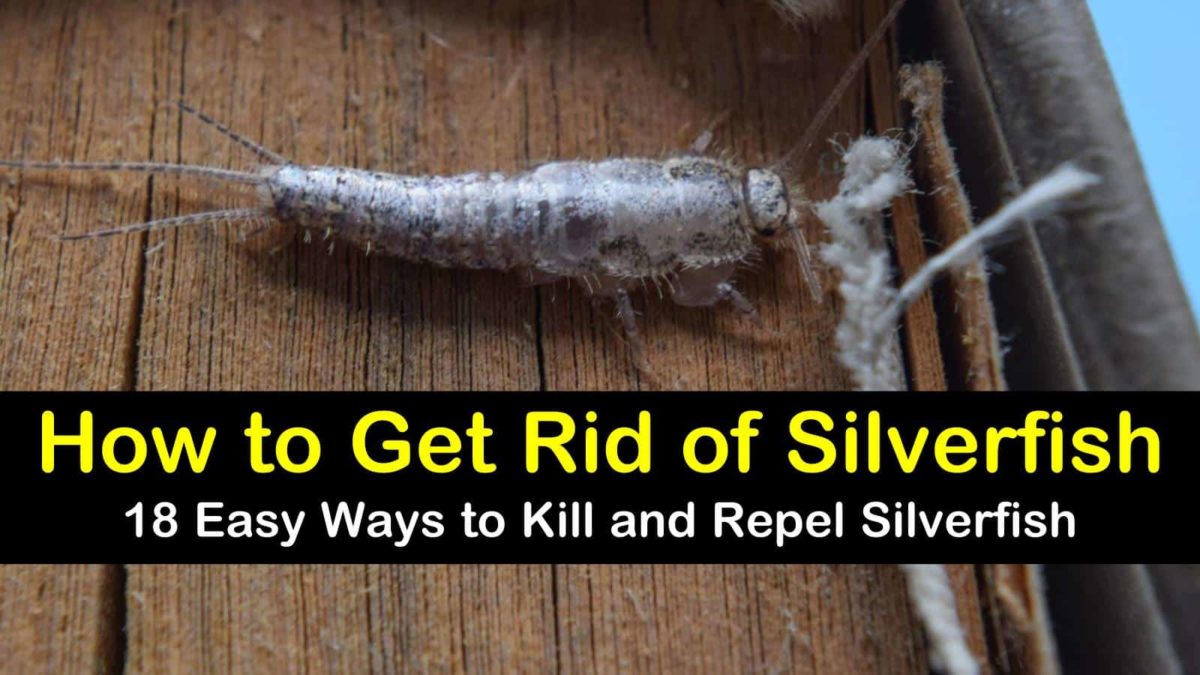Silverfish Biology and Habits

Silverfish, with their sleek, silver bodies and darting movements, are common household pests that often cause concern for homeowners. Understanding their biology and habits is crucial for effective control and prevention.
Life Cycle of Silverfish
Silverfish undergo a process called incomplete metamorphosis, meaning they do not have a larval stage. Their life cycle consists of three distinct stages: egg, nymph, and adult.
- Eggs: Female silverfish lay small, white, oval-shaped eggs in dark, moist crevices. These eggs typically hatch within one to three months, depending on environmental conditions.
- Nymphs: The newly hatched nymphs resemble miniature adults, but lack wings and reproductive organs. They molt several times as they grow, gradually becoming larger and more mature.
- Adults: Adult silverfish are typically 1/2 to 3/4 inches long and have a silvery-gray color. They are sexually mature and can live for up to three years, continuing to molt throughout their lives.
Physical Characteristics of Silverfish
Silverfish are easily recognized by their distinctive physical features:
- Elongated body: Silverfish have a long, slender body, tapering towards the tail.
- Silver-gray color: Their bodies are covered in scales that give them a silvery-gray appearance.
- Three long cerci: They have three long, thread-like appendages at the end of their abdomen called cerci.
- Antennae: Silverfish possess long, sensitive antennae that help them navigate their surroundings.
Feeding Habits and Diet of Silverfish
Silverfish are omnivores, meaning they feed on a variety of food sources. Their diet primarily consists of:
- Starch: They are particularly attracted to starchy materials like wallpaper paste, book bindings, and fabrics.
- Sugars: Silverfish also feed on sugary substances, including food spills, dried fruit, and even dead insects.
- Organic matter: They may consume small amounts of organic matter, such as mold, mildew, and dead plant material.
Preferred Environments for Silverfish
Silverfish thrive in environments that provide them with the following:
- Moisture: They prefer humid areas, such as bathrooms, kitchens, and basements, where they can find moisture to survive.
- Darkness: Silverfish are nocturnal and avoid light, preferring to hide in dark, secluded areas.
- Food sources: They require access to food sources, such as starchy materials, sugary substances, and organic matter.
Nocturnal Behavior of Silverfish
Silverfish are primarily active at night, emerging from their hiding places to search for food and water. They are highly sensitive to light and will quickly retreat to darkness if disturbed.
Silverfish in the Bedroom: Silverfish On Bedroom Wall

Silverfish, with their elongated, silvery bodies, are a common sight in many homes, particularly in bedrooms. They are nocturnal creatures that prefer dark, damp, and undisturbed environments, making bedrooms a perfect breeding ground.
Common Entry Points for Silverfish into Bedrooms
Silverfish can enter bedrooms through various openings, including:
- Cracks and crevices in walls and floors
- Gaps around windows and doors
- Openings in plumbing fixtures
- Ventilation systems
- Through bags, boxes, or other items brought into the bedroom
They can also easily squeeze through small openings, making it crucial to seal any potential entry points.
Factors that Attract Silverfish to Bedrooms
Bedrooms offer a welcoming environment for silverfish due to:
- Availability of food sources: Silverfish feed on starchy materials like paper, fabrics, and even dead insects. Bedrooms often contain books, clothes, and other items that provide a ready source of food.
- Moisture: Silverfish thrive in humid environments. Bathrooms and laundry rooms often have higher humidity levels, but bedrooms can also be susceptible to moisture buildup, especially if they are poorly ventilated.
- Darkness: Silverfish are nocturnal and prefer dark environments. Bedrooms, with their dim lighting at night, provide the perfect hiding spots for these creatures.
- Warmth: Silverfish prefer warm temperatures. Bedrooms, especially those with central heating, can offer a comfortable environment for these insects.
Potential Risks Associated with Silverfish Infestations
While silverfish are not known to carry diseases or bite humans, their presence can pose several risks:
- Damage to belongings: Silverfish can damage books, clothes, wallpaper, and other items made of paper or fabric. They feed on these materials, leaving behind holes and uneven surfaces.
- Allergic reactions: Some people may be allergic to silverfish droppings or shed skin, which can trigger allergic reactions such as sneezing, itching, and watery eyes.
- Psychological discomfort: The presence of silverfish can be unsettling and cause psychological discomfort, especially for those with entomophobia (fear of insects).
Damage Silverfish Can Cause to Belongings in a Bedroom
Silverfish can cause significant damage to various belongings in a bedroom, including:
- Books: They can chew through pages, leaving behind unsightly holes and damaged spines. Valuable or antique books are particularly vulnerable.
- Clothes: Silverfish can damage clothing made of natural fibers such as cotton, silk, and wool. They can create holes, weaken fabric, and leave behind a musty odor.
- Wallpaper: Silverfish can feed on the paste used to adhere wallpaper, causing it to peel and detach from the walls.
- Photographs: Silverfish can damage photographs, particularly those with paper backing. They can chew through the paper, leaving behind holes and discolored areas.
Tips for Preventing Silverfish Infestations in Bedrooms
To prevent silverfish infestations in bedrooms, follow these tips:
- Reduce moisture: Ensure proper ventilation in the bedroom by opening windows or using a dehumidifier. Fix any leaks or plumbing issues promptly.
- Clean regularly: Vacuum and dust regularly, paying attention to cracks and crevices where silverfish might hide. Remove clutter and store items in airtight containers.
- Seal entry points: Seal cracks and crevices in walls and floors using caulk or sealant. Repair any gaps around windows and doors.
- Store food properly: Keep food in airtight containers and avoid leaving crumbs or spills on the floor. Store books and other paper items in airtight containers or plastic bags.
- Use natural deterrents: Some essential oils, such as cedarwood and peppermint, are said to repel silverfish. You can add a few drops of these oils to a spray bottle and mist around the bedroom.
Managing Silverfish Infestations

Silverfish infestations can be a nuisance, but with the right approach, you can effectively control and eliminate them. Here’s a comprehensive guide to help you tackle this common household pest.
Identifying Silverfish Infestations
Identifying a silverfish infestation involves observing signs of their presence. These include:
- Silverfish themselves: Look for the telltale silver, teardrop-shaped insects with long antennae and three long appendages at the end of their bodies. They typically move quickly and prefer dark, humid environments.
- Droppings: Silverfish leave behind small, dark droppings that resemble pepper flakes. You might find them in areas where silverfish congregate.
- Damage to materials: Silverfish feed on paper, starch, and other materials containing carbohydrates. Check for irregular holes or damage in books, wallpaper, and other items in your home.
Eliminating Silverfish Infestations
Eliminating silverfish infestations involves a combination of methods, including:
- Reduce Moisture: Silverfish thrive in humid environments. To control their population, address moisture issues in your home. Repair leaks, ventilate damp areas, and use dehumidifiers to lower humidity levels.
- Clean Regularly: Regularly clean and vacuum your home, paying special attention to areas where silverfish are likely to hide, such as behind furniture, under sinks, and in closets.
- Seal Entry Points: Inspect your home for potential entry points for silverfish. Seal cracks and crevices in walls, floors, and windows to prevent them from entering.
- Remove Food Sources: Silverfish are attracted to food sources like paper, cardboard, and starch-based materials. Store food in airtight containers and remove any potential food sources, such as old books, newspapers, and unused cardboard boxes.
- Use Traps: Glue traps and bait traps can be effective in catching silverfish. Place them in areas where you’ve seen signs of infestation.
- Consider Diatomaceous Earth: Diatomaceous earth is a natural, non-toxic powder made from fossilized diatoms. When silverfish come into contact with it, it abrades their exoskeletons, causing them to dehydrate and die.
Natural Remedies for Repelling Silverfish, Silverfish on bedroom wall
Natural remedies can be an effective way to deter silverfish. Here are some options:
- Cedar Oil: Cedar oil is a natural insect repellent that can help keep silverfish away. You can use cedar oil in a diffuser, or you can soak cotton balls in cedar oil and place them in areas where you’ve seen silverfish.
- Bay Leaves: Bay leaves have a strong scent that silverfish dislike. Place fresh or dried bay leaves in areas where you’ve seen silverfish.
- Mint: Mint oil and peppermint oil are also known to repel silverfish. You can use them in a diffuser, or you can soak cotton balls in the oil and place them in areas where you’ve seen silverfish.
- Lavender: Lavender oil is a natural insecticide that can help control silverfish populations. You can use it in a diffuser or spray it around areas where you’ve seen silverfish.
Using Pesticides for Controlling Silverfish Populations
Pesticides can be an effective way to control silverfish populations, but it’s important to use them cautiously. Here are some tips:
- Choose a Pesticide Carefully: Select a pesticide specifically designed for silverfish control. Read the label carefully and follow the instructions for safe and effective use.
- Target Areas: Apply the pesticide in areas where you’ve seen signs of silverfish, such as behind furniture, under sinks, and in closets. Avoid spraying in areas where children or pets might come into contact with it.
- Use Pesticides Sparingly: Use pesticides sparingly and only when necessary. Excessive use can harm beneficial insects and pets.
- Consider Professional Help: If you have a severe silverfish infestation or if you’re uncomfortable using pesticides, it’s best to consult a professional pest control company.
Professional Pest Control Services for Silverfish Infestations
Professional pest control services can be a valuable resource for dealing with silverfish infestations. They have the expertise and tools to effectively control and eliminate silverfish populations. Here are some benefits of using professional pest control services:
- Expert Knowledge: Professional pest control technicians have the knowledge and experience to identify the root cause of your silverfish infestation and develop a tailored treatment plan.
- Safe and Effective Treatments: They use safe and effective pest control methods to eliminate silverfish without harming your family or pets.
- Long-Term Solutions: They can provide long-term solutions to prevent future infestations.
Comparing Different Methods for Controlling Silverfish Infestations
Here’s a table comparing different methods for controlling silverfish infestations:
| Method | Effectiveness | Cost | Safety | Ease of Use |
|---|---|---|---|---|
| Natural Remedies | Moderate | Low | High | Easy |
| Traps | Moderate | Low | High | Easy |
| Diatomaceous Earth | Moderate | Low | High | Easy |
| Pesticides | High | Moderate | Moderate | Moderate |
| Professional Pest Control | High | High | High | Easy |
Silverfish on bedroom wall – Nah, those silverfish scuttling on your bedroom wall? Don’t let them dampen your spirits! Instead, why not unleash your creativity and make your room a true reflection of your personality with some DIY teenage bedroom wall art ? It’s a fun way to personalize your space and distract from those pesky critters.
And who knows, maybe you’ll even inspire some silverfish art in the process!
Wah, seeing silverfish scuttling on your bedroom wall can be a bit of a shock! But hey, a little light can chase away those creepy crawlies. Consider adding a dimmable bedroom wall sconce to your space. Not only will it look stylish, but the bright light will make your bedroom less inviting for those pesky silverfish.